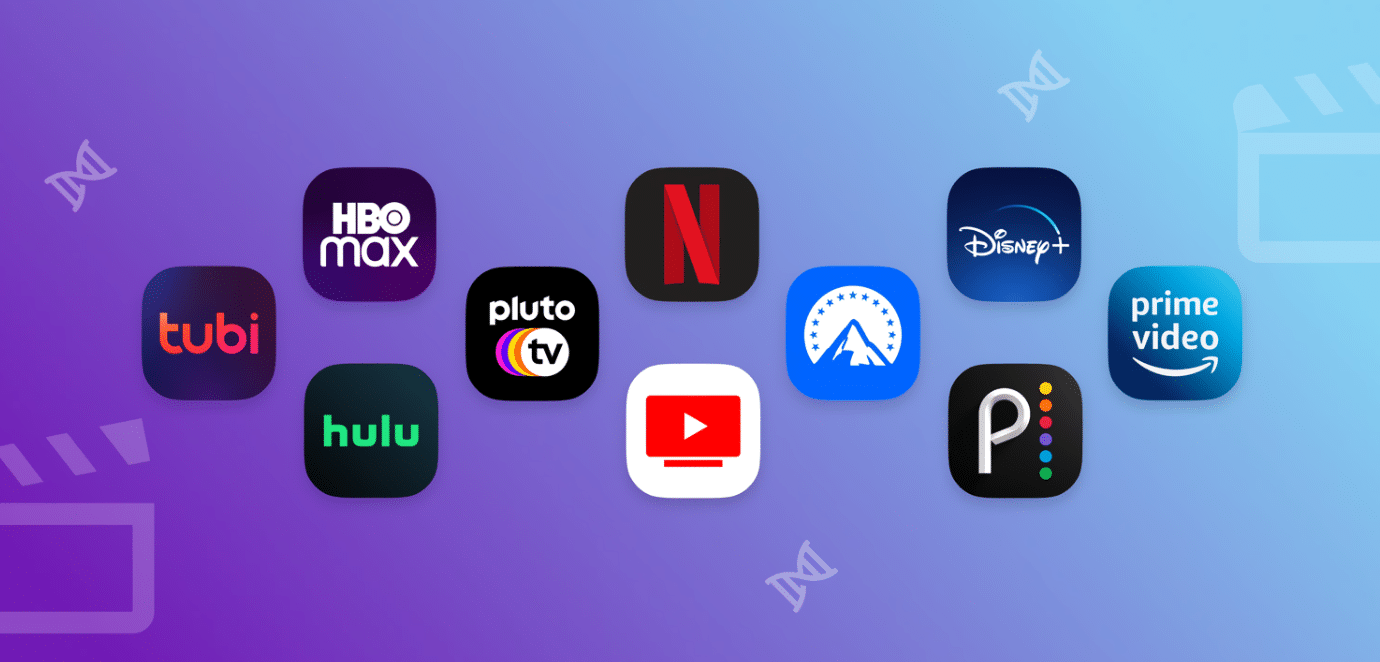Streaming App – In the past decade, the way people watch movies, listen to music, or follow their favorite shows has fundamentally changed. Gone are the days of CDs, DVDs, and traditional cable subscriptions. Today, entertainment is just a tap away, thanks to the rise of streaming apps. From Netflix to Spotify, from YouTube to Disney+, streaming apps have not only reshaped the media landscape but also influenced how content is created, consumed, and monetized.
This article explores the evolution of streaming apps, their core technologies, business models, features, benefits, challenges, and what the future holds in this dynamic digital ecosystem.

What Is a Streaming App?
A streaming app is a software application that allows users to access multimedia content—such as videos, music, or live broadcasts—via the internet, in real time or on demand, without downloading the entire file beforehand.
Types of Streaming Apps:
-
Video Streaming Apps: Netflix, YouTube, Hulu, Disney+, Amazon Prime Video.
-
Music Streaming Apps: Spotify, Apple Music, Tidal, Deezer.
-
Live Streaming Apps: Twitch, Facebook Live, YouTube Live.
-
Hybrid Apps: Platforms that offer both live and on-demand content (e.g., HBO Max, Peacock).
-
Niche Streaming Apps: Focused on specific genres or content types (e.g., Crunchyroll for anime, CuriosityStream for documentaries).
How Streaming Apps Work
Streaming apps operate using a combination of cloud computing, content delivery networks (CDNs), compression algorithms, and real-time data transfer protocols.
The Process:
-
Content is hosted on a server, often in the cloud.
-
When a user selects content, the app requests the data.
-
CDNs deliver the content from the nearest server to reduce latency.
-
Data is compressed and buffered as it streams, ensuring smooth playback.
-
Some platforms use adaptive bitrate streaming, which adjusts video quality based on internet speed.
This on-the-fly delivery model enables users to start watching or listening within seconds, even on slower connections.
Key Features of Streaming Apps
For a streaming app to succeed, it must offer a seamless, enjoyable user experience. Here are the essential features:
1. User Profiles and Personalization
Streaming apps track user behavior to offer personalized recommendations, playlists, and watchlists.
2. Search and Discovery
Advanced search engines, categories, tags, and curated content help users find what they love.
3. Playback Controls
Options like rewind, fast forward, subtitles, multiple languages, and picture-in-picture mode enhance usability.
4. Offline Access
Premium plans often offer downloadable content for offline viewing.
5. Live Chat and Social Sharing
Particularly common in live streaming apps, fostering community interaction.
6. Parental Controls
For family-friendly platforms, allowing safe viewing for children.
7. Multiple Device Support
Cross-platform availability—TVs, smartphones, tablets, consoles—is critical.
The Technology Behind Streaming Apps
A robust streaming app depends on powerful backend architecture and frontend performance.
Backend Technologies:
-
Cloud Servers: AWS, Google Cloud, Azure host and serve content.
-
Databases: Store user profiles, preferences, and metadata.
-
APIs: Allow integration with third-party tools, billing systems, and analytics.
-
AI/ML Algorithms: Power recommendations and content discovery.
Frontend Frameworks:
-
React Native, Flutter: For cross-platform app development.
-
HTML5 Video/Audio Players: Compatible with most browsers and devices.
Streaming Protocols:
-
HLS (HTTP Live Streaming) by Apple.
-
DASH (Dynamic Adaptive Streaming over HTTP).
-
RTMP (Real-Time Messaging Protocol) for live streaming.
Monetization Models
Streaming apps employ a variety of revenue strategies to remain sustainable and profitable.
1. Subscription-Based (SVOD)
Users pay a monthly or annual fee to access content (e.g., Netflix, Disney+).
2. Ad-Supported (AVOD)
Free content supported by ads (e.g., YouTube, Pluto TV).
3. Freemium
Basic access is free; premium features are locked behind a paywall (e.g., Spotify).
4. Transactional (TVOD)
Users pay per view or per download (e.g., iTunes Movies, Amazon Rentals).
5. Hybrid Models
Some platforms combine subscriptions with ads or offer both free and premium tiers.
6. Donations and Sponsorships
Common in user-generated content platforms like Twitch or Patreon.
Benefits of Streaming Apps
Streaming apps have become a dominant force in digital entertainment for several compelling reasons.
1. Convenience
Watch or listen to content anytime, anywhere, on any device.
2. Affordability
Monthly subscriptions often cost less than traditional cable or media ownership.
3. Variety and Diversity
Access to vast libraries of global content, including niche and independent productions.
4. Personalized Experience
AI-powered recommendations cater to individual preferences and habits.
5. Content Accessibility
Subtitles, audio descriptions, and multiple language options make content more inclusive.
Challenges Faced by Streaming Apps
Despite their advantages, streaming apps also face significant challenges.
1. Content Licensing
Securing rights to distribute content across regions can be complex and expensive.
2. Bandwidth and Connectivity
High-quality streaming requires strong internet infrastructure, which may not be available in all regions.
3. Piracy and Security
Protecting content from unauthorized distribution is a constant battle.
4. Competition
With so many platforms, users often suffer from “subscription fatigue.”
5. Monetization Pressure
Balancing ad revenue, user experience, and subscription affordability is tricky.
Streaming App Trends in 2025
The world of streaming is evolving rapidly. Here’s what we can expect:
1. Interactive and Immersive Content
Choose-your-own-adventure shows, VR integration, and AR experiences.
2. AI-Powered Personalization
Smarter recommendation engines and voice-controlled navigation.
3. Original Content Wars
Platforms are investing billions in producing exclusive shows and films to attract subscribers.
4. Global Expansion
Localized content and language support to reach emerging markets.
5. Live Shopping and Events
Combining entertainment with e-commerce in live streams.
6. Green Streaming
Sustainable data centers and low-energy codecs to reduce environmental impact.
Building a Streaming App: Key Considerations
For businesses and developers looking to build a streaming app, here are some crucial steps:
1. Define Your Niche
Are you targeting music lovers, gamers, film buffs, or educational content?
2. Choose a Scalable Architecture
Cloud-based services ensure your platform can handle growth and demand spikes.
3. Invest in UX/UI Design
An intuitive, responsive, and visually appealing interface drives user engagement.
4. Focus on Content Quality
Original, exclusive, or high-quality curated content sets you apart.
5. Ensure Compliance
Meet legal and data protection regulations like GDPR, COPPA, and DMCA.
The Impact of Streaming Apps on Traditional Media
Streaming apps have disrupted nearly every aspect of traditional media.
• Decline of Cable TV
Cord-cutting is becoming the norm as users shift to on-demand platforms.
• Movie Theaters Adapt
Studios are experimenting with simultaneous online and cinema releases.
• Music Industry Transformation
Artists now reach fans directly, and data from apps guides music production and promotion.
• Journalism and Live Broadcasting
News organizations use streaming apps to deliver real-time updates and interviews.
Conclusion
Streaming apps have redefined how we engage with content. They are not just entertainment platforms—they are ecosystems that connect creators, users, advertisers, and technology in a seamless digital experience. As consumer expectations evolve and technology advances, the streaming industry will continue to innovate, offering richer, more personalized, and immersive experiences.
Whether you’re an entrepreneur eyeing the next big streaming startup, a developer working on backend infrastructure, or just a content enthusiast, understanding the intricacies of streaming apps is essential in today’s media-savvy world.

